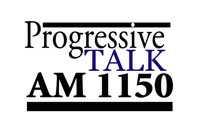Thursday, November 10, 2005
Distinction Without A Difference
Today Reuters reports the use of napalm-like weapons in Iraq -- and a denial from the Pentagon that it's ever used WP against civilians:
The US military has denied that it used white phosphorus against civilians. It confirmed, however, that US forces had dropped MK 77 firebombs, which a documentary on Italian state-run broadcaster RAI compared to napalm, against military targets in Iraq in March and April 2003. That denial is rather interesting, in view of this WP article from 2004, an article which is generally very supportive of the military actions against Fallujah and which almost certainly was vetted by military censors before seeing print:
On Tuesday night, Fallujah's eerily empty streets were littered with shattered concrete and dead bodies, said a resident shaken by a missile strike on the second story of his family home. Insurgents cloaked in checkered head scarves carried wounded fellow fighters to mosques. Civilians caught in the crossfire were gathered in a hospital donated by the United Arab Emirates and flying a blue and white UNICEF banner. There, medical workers low on bandages and antiseptic bound wounds in ripped sheets and cleaned torn skin with hot water. The Jolan and Askali neighborhoods seemed particularly hard hit, with more than half of the houses destroyed. Dead bodies were scattered on the streets and narrow alleys of Jolan, one of Fallujah's oldest neighborhoods. Blood and flesh were splattered on the walls of some of the houses, witnesses said, and the streets were full of holes. Some of the heaviest damage apparently was incurred Monday night from air and artillery attacks that coincided with the entry of ground troops into the city. U.S. warplanes dropped eight 2,000-pound bombs on the city overnight, and artillery boomed throughout the night and into the morning. "Usually we keep the gloves on," said Army Capt. Erik Krivda, of Gaithersburg, the senior officer in charge of the 1st Infantry Division's Task Force 2-2 tactical operations command center. "For this operation, we took the gloves off." Some artillery guns fired white phosphorous rounds that create a screen of fire that cannot be extinguished with water. Insurgents reported being attacked with a substance that melted their skin, a reaction consistent with white phosphorous burns. Kamal Hadeethi, a physician at a regional hospital, said, "The corpses of the mujaheddin which we received were burned, and some corpses were melted."You'll hear much talk among right-wingers and many military-minded folk that white phosphorus isn't really a "chemical weapon", since it was never legally defined as one. But it's pretty damned obvious that US field officers are ordering it to be used as one, and not just for "illumination" as the Pentagon claims here. Considering how WP and napalm are both used against civilian personnel in extremely similar fashion, with extremely similar results, I'd say that to distinguish between the two is, for all practical battlefield purposes, to make a distinction without a difference.
Napalm is a mixture of benzene (21%), gasoline (33%), and polystyrene (46%). Benzene is a normal component of gasoline (about 2%). The gasoline used in napalm is the same leaded or unleaded gas that is used in automobiles....
The last remnants of America’s MK 77 Mod 4 napalm stockpile were stored at Fallbrook, and a state-of-the-art facility was built on base to help eliminate these weapons....
In March 2003 the Pentagon denied a report in The Age that napalm had been used in an attack by US Navy planes on an Iraqi position at Safwan Hill in southern Iraq. A navy official in Washington, Lieutenant-Commander Danny Hernandez, said: "We don't even have that in our arsenal." The report was filed by Age correspondent Lindsay Murdoch, who was attached to units of the First US Marine Division.
The Mk 77 Mod 5 firebombs are incendiary devices with a function indentical to earlier Mk 77 napalm weapons. Instead of the gasoline and benzene fuel, the Mk 77 Mod 5 firebomb uses kerosene-based jet fuel, which has a smaller concentration of benzene.
Got it? If it's a sticky gel that contains gasoline plus benzene, that's napalm. If it's jet fuel, which contains less benzene, it's not. So the military routinely deny that they're using napalm because they're burning people to death using less benzene.
White phosphorus is, despicably, legal because the US refuses to sign treaties banning it. The way it was used in Fallujah, however, probably amounted to a war crime.
I think there's a basic misconception here about how WP bursting munitions work. They do not create a cloud of burning or poisonous gas. The burning fragments of WP that are expelled by the munition are just like shrapnel that comes from a high explosive shell, except that instead of sharp chunks of hot metal they're bits of WP burning at 5000 degrees. If one of those fragments don't hit you, you don't get burned. This is contrary to the impression left by the RAI video, but it's true. If WP munitions worked in the way they claimed, it would be very difficult to use in grenades or in non-bursting flares. I've been within feet of a burning WP trip flare and stood in the smoke and fumes without ill result.
In any case, there's a vast difference between napalm-or whatever we're calling it these days-and WP.
Found your blog from Kos, btw. Cute kitties!
<< Home
More blogs about politics.








